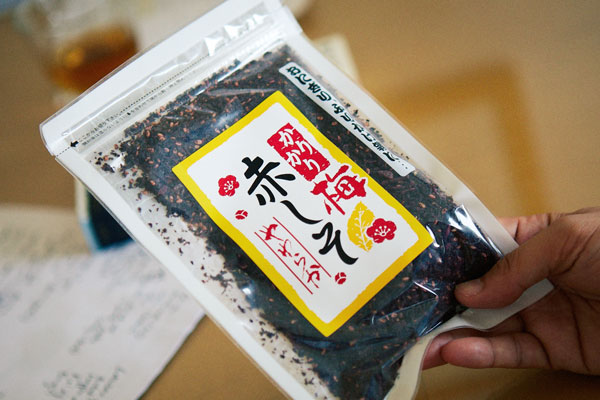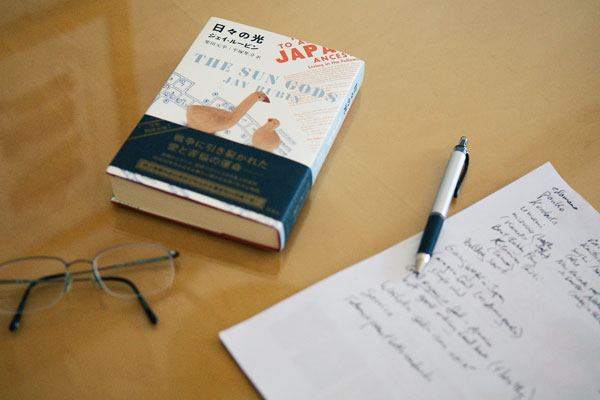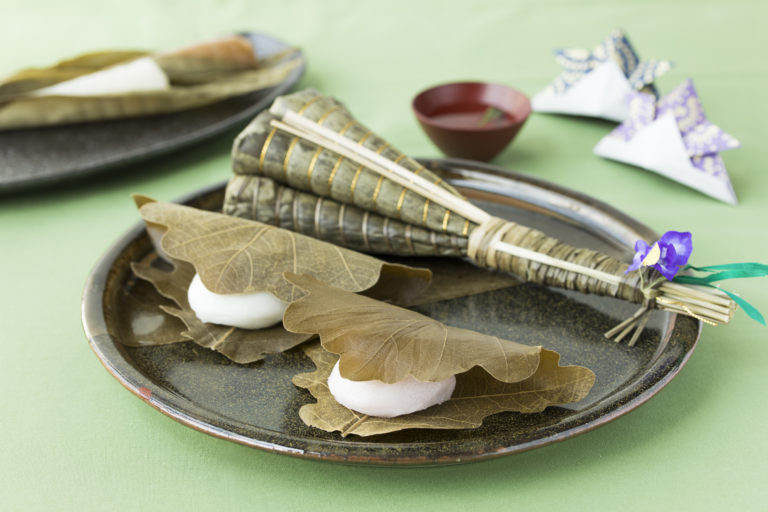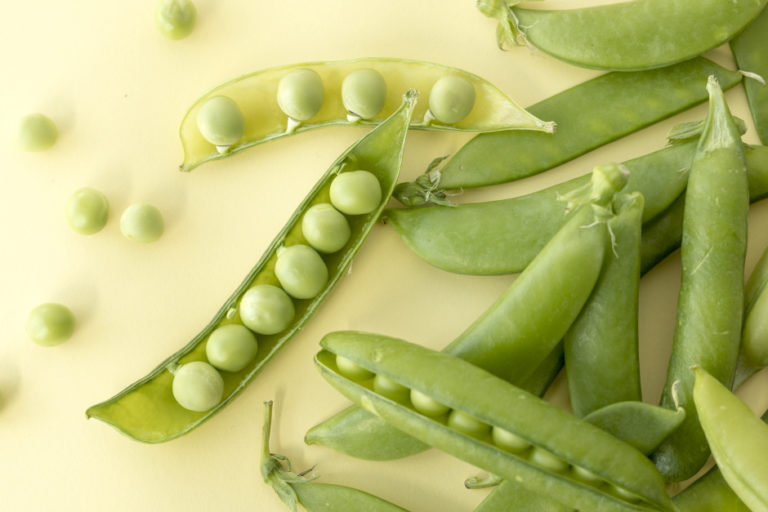SHUN CURATORS (September 2015)
Savoring the delicate flavor of Japanese cuisine
― Jay Rubin,scholar and translator of Japanese literature

Although he lives in the United States, he speaks fluent Japanese and is highly knowledgeable about Japan, visiting here at least once a year. He is also very interested in Japanese cuisine, and by traveling to different parts of the country every time he visits, he says that he has savored a variety of dishes.
We had the chance to speak with Jay about Japanese food culture during his visit to Japan for the publication of the Japanese translation of his debut novel, The Sun Gods (July 2015).
Interest in Japanese food came from Japanese literature
Can you tell us what prompted you to study Japanese literature?
I was attracted to how interesting the Japanese language is when I read a novel by Soseki Natsume in the United States. The Japanese language has a completely different structure from English, with beautiful expressions that can convey even the slightest of nuances.
And, after enjoying various Japanese literary works, I became interested in Japanese culture itself. Little was known about Japanese culture in the United States at that time, so everything I saw was so fresh, and I quickly became enchanted with Japanese culture.
Japanese literature was also the reason why I wanted to try Japanese food. The first Japanese dish I had was miso soup and katsudon, deep fried pork cutlet with egg over rice. This was at a restaurant in Chicago’s Japantown, which I had looked up. The delicate flavor of Japanese food was totally different from the food I usually ate, and it was delicious.
And, after enjoying various Japanese literary works, I became interested in Japanese culture itself. Little was known about Japanese culture in the United States at that time, so everything I saw was so fresh, and I quickly became enchanted with Japanese culture.
Japanese literature was also the reason why I wanted to try Japanese food. The first Japanese dish I had was miso soup and katsudon, deep fried pork cutlet with egg over rice. This was at a restaurant in Chicago’s Japantown, which I had looked up. The delicate flavor of Japanese food was totally different from the food I usually ate, and it was delicious.

Astonished by the local fish and side dishes at convenience stores
Are there some food experiences in Japan that are memorable to you?
When we took a car from Kyoto, driving around the San’in region and then visiting Saga, where my wife grew up, I was able to enjoy the local fish of Hagi in Yamaguchi Prefecture and fish from the Genkai Sea in Kyushu. Young yellowtail with its mellow fatty taste, octopus, medium-fatty tuna… these and others were so delicious I could eat them every day without growing tired of them.
The large squid ikizukuri, prepared from live squid, which I had at Yobuko in Saga Prefecture was also wonderful. One of my favorite restaurants in Saga is Misho. When we return to the area, we enjoy the depths of Japanese food.
The large squid ikizukuri, prepared from live squid, which I had at Yobuko in Saga Prefecture was also wonderful. One of my favorite restaurants in Saga is Misho. When we return to the area, we enjoy the depths of Japanese food.
Was there anything that you found particularly impressive during your visit this time?
I always come in the fall, so it was the first time in quite a while for me to be here in the summer. The heat prevented me from going out, and so much of what I ate was purchased at convenience stores (laughter). But the level of food at Japan’s convenience stores is also very high. The salads are fresh, and side dishes like pickled vegetables, tsukemono, and simmered kiriboshi daikon made from dried, shredded daikon radish, are also quite good. In the United States, I probably only go to convenience stores when I’m out of milk. I was very surprised by Japanese convenience stores where you can get salads of the same quality as that served at restaurants.

The key to liking Japanese food is selecting the flavoring
What is the level of interest toward Japan’s food culture in the United States?
Because Japanese food is healthy, it is becoming more and more popular in the United States as well. Scenes with sushi bars even appear in TV shows, and we have lately been hearing words like edamame (immature green soybeans), panko (bread crumbs) and kurobuta (black pork) used in the English language.
I have personally made it part of my daily routine to eat tofu for breakfast. A strong flavored tofu with red shiso (perilla) ordered from Shiga Prefecture has been my favorite dish for years.
I have personally made it part of my daily routine to eat tofu for breakfast. A strong flavored tofu with red shiso (perilla) ordered from Shiga Prefecture has been my favorite dish for years.

Do you have some advice for people overseas who will be eating Japanese food for the first time?
It will probably be difficult to recognize the delicate flavor of Japanese cuisine at first. I think those who take on the challenge of eating Japanese food should do so in stages.
Raw fish and natto fermented soybeans will probably not appeal to newcomers to Japanese food. I recommend that they start with food that has a clear, obvious taste. For instance, grilled eel has a flavor similar to beef, and so would probably appeal to Americans. If you want to try natto, select a brand that doesn’t have such a strong smell (laughter). I hope people will gradually come to appreciate the subtleness of Japanese cuisine by not trying too hard in the beginning.
Raw fish and natto fermented soybeans will probably not appeal to newcomers to Japanese food. I recommend that they start with food that has a clear, obvious taste. For instance, grilled eel has a flavor similar to beef, and so would probably appeal to Americans. If you want to try natto, select a brand that doesn’t have such a strong smell (laughter). I hope people will gradually come to appreciate the subtleness of Japanese cuisine by not trying too hard in the beginning.

Writer : MINA HIRANO
/
Photographer : KOJI TSUCHIYA






